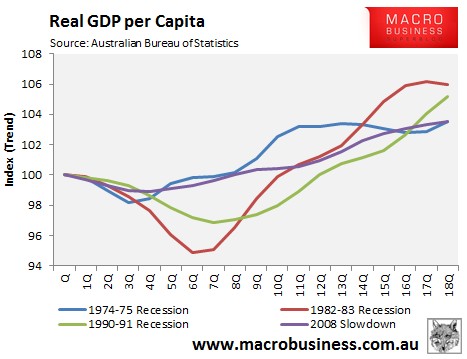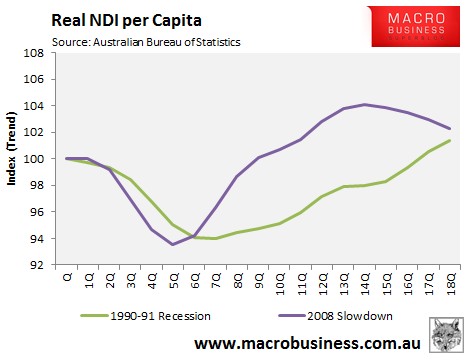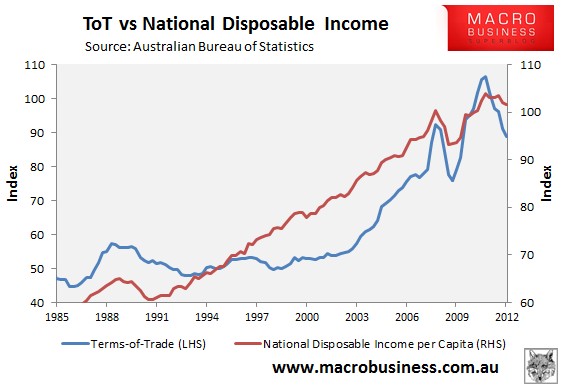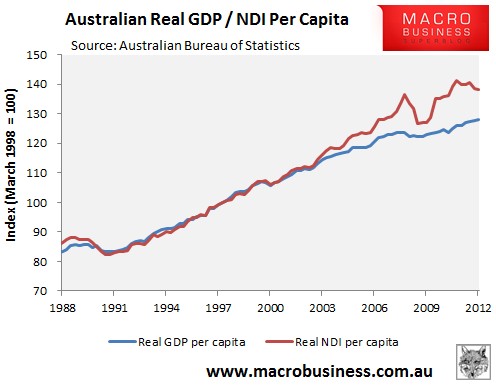
Following on from yesterday’s national accounts release by the Australian Bureau of Statistics (ABS), I thought it would be interesting to once again benchmark Australia’s economic recovery since the Global Financial Crisis (GFC) against the recessions of the 1970s, 1980s and the 1990s. For the purpose of this analysis, I have chosen to use real GDP per capita as the measure, since it removes growth distortions from population growth and inflation, and better reflects economic welfare than the headline real GDP figure typically quoted by economists.

As shown by the above chart, which measures real GDP per capita using the ABS’ trend measure, it took 8 quarters (June 2010) before GDP per capita recovered to its June 2008 level. And 18 quarters later (December 2012), GDP per capita is only 3.5% above the level in June 2008.
While the 2008 slowdown (recession in terms of real GDP per capita) was not as severe as the previous three episodes, the recovery has been fairly slow by comparison, with growth under performing the 1990-91 and 1982-83 episodes, but equalling the 1974-75 experience, after 18 quarters. The trends look likely to widen the gaps further.
Although the recovery in real GDP per capita has been weak this time around, it would be wrong to suggest that Australians are worse-off. Real per capita national disposable income (NDI) – arguably, an even more useful measure of welfare – has grown strongly, as shown by the below chart (data unfortunately does not exist for the 1970s and 1980s recessions):

The key reason for the stronger income growth following the 2008 slowdown was the surge in the terms-of-trade, which significantly boosted incomes, company profits, government tax receipts, and spending. However, the terms-of-trade has now fallen for five consecutive quarters on account of declining commodity prices, which is pulling-down personal disposable incomes (see next chart).

In the event that commodity prices were to continue falling, Australia would face a prolonged period of low income growth, whereby per capita disposable incomes grow at a much slower pace than the economy at large, as measured by per capita GDP. In turn, the two lines on the below chart would continue to converge, unwinding the exceptionally strong income gains experienced since the commodity boom began in 2003:


